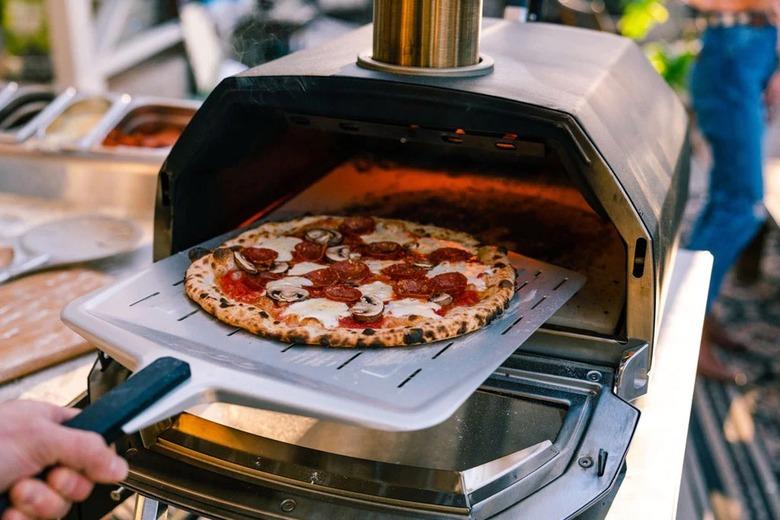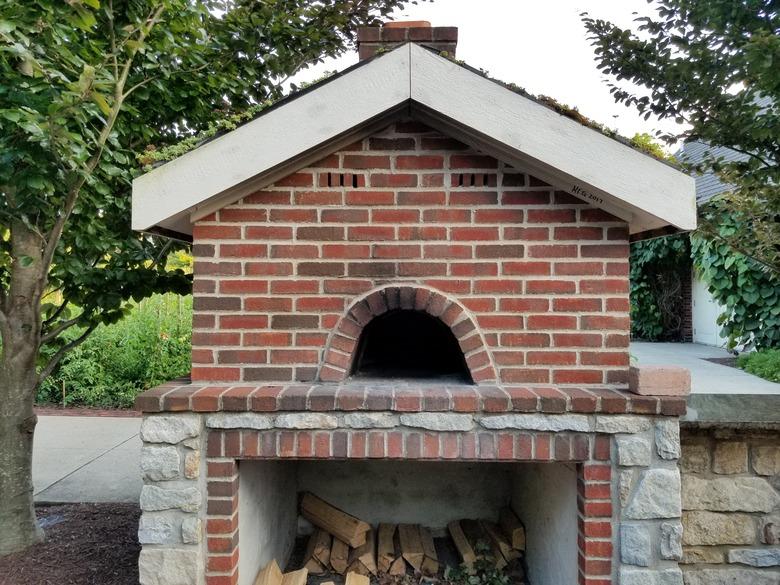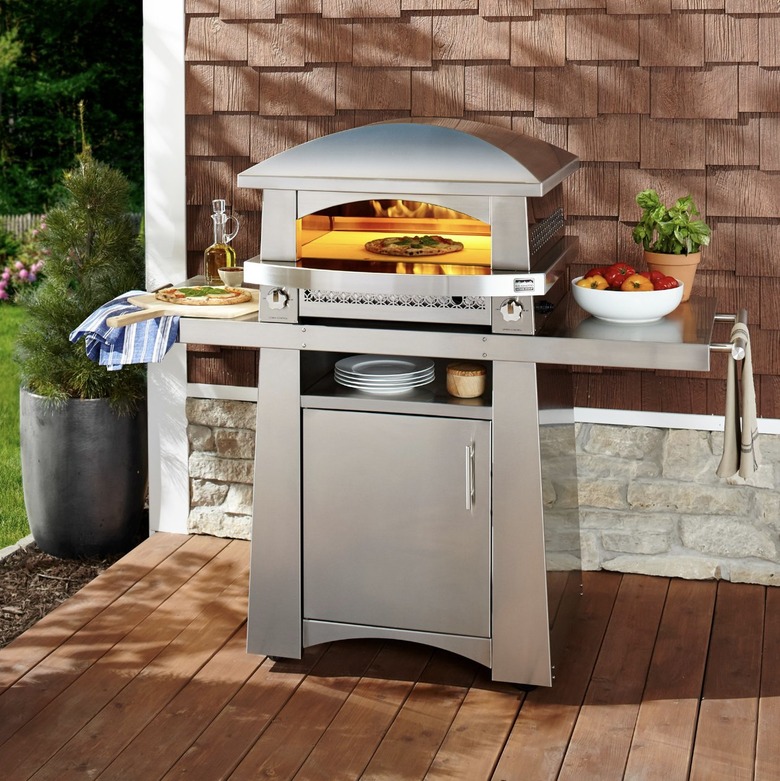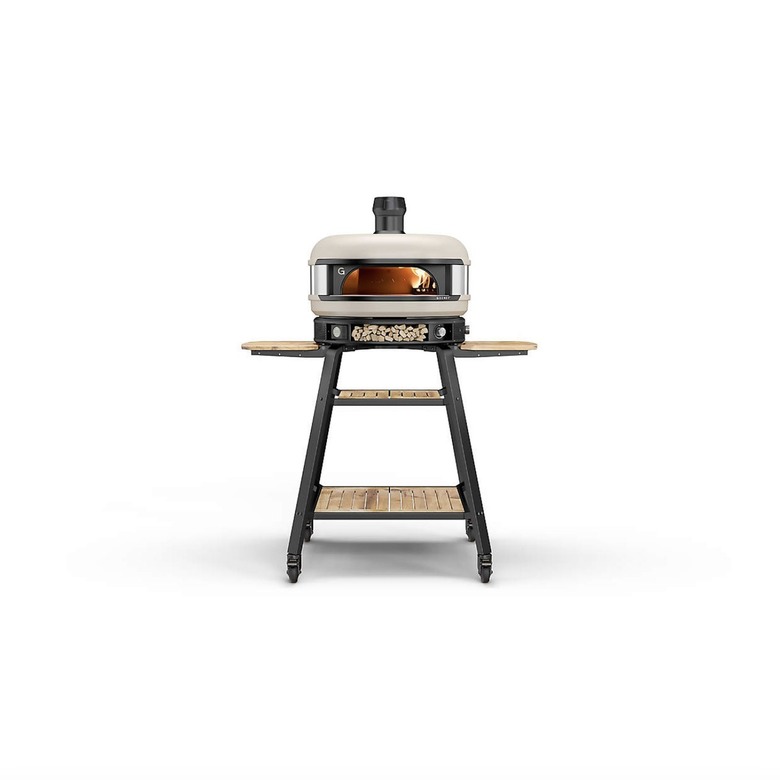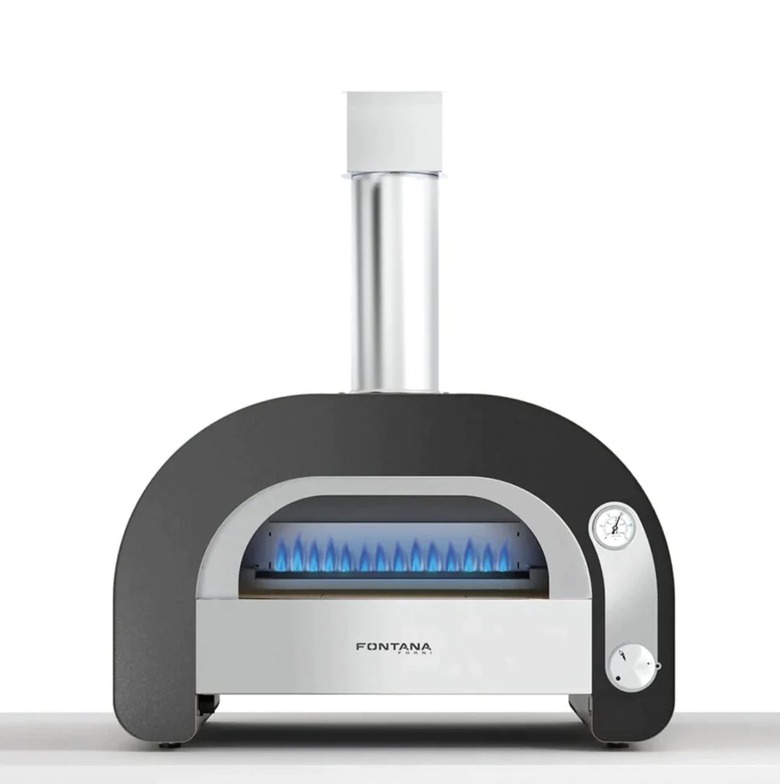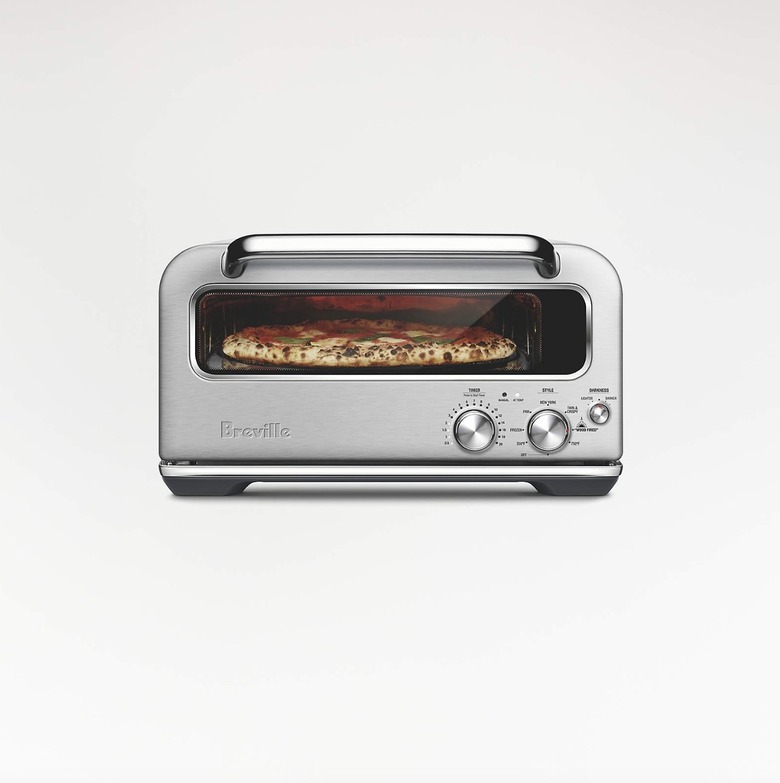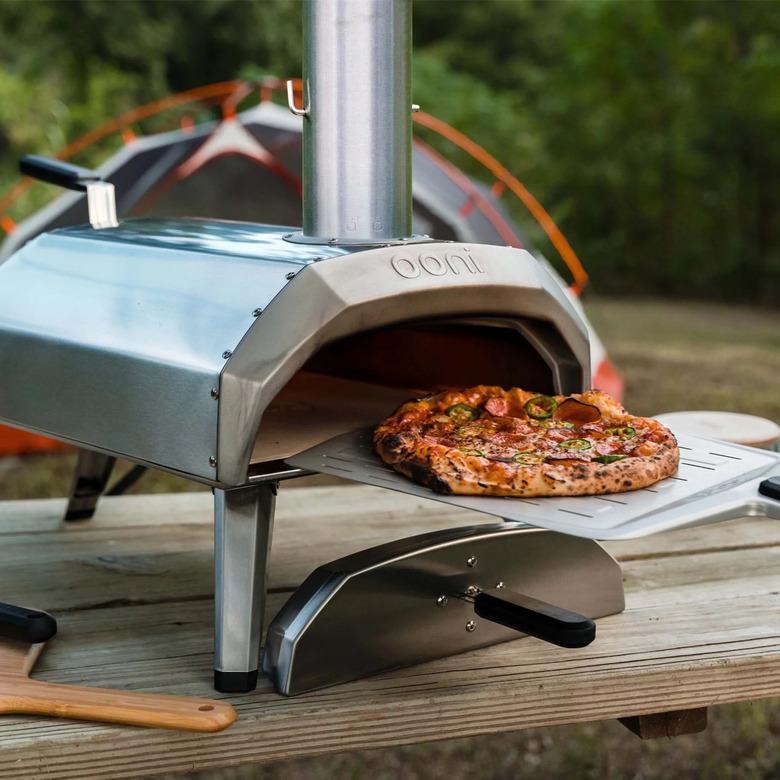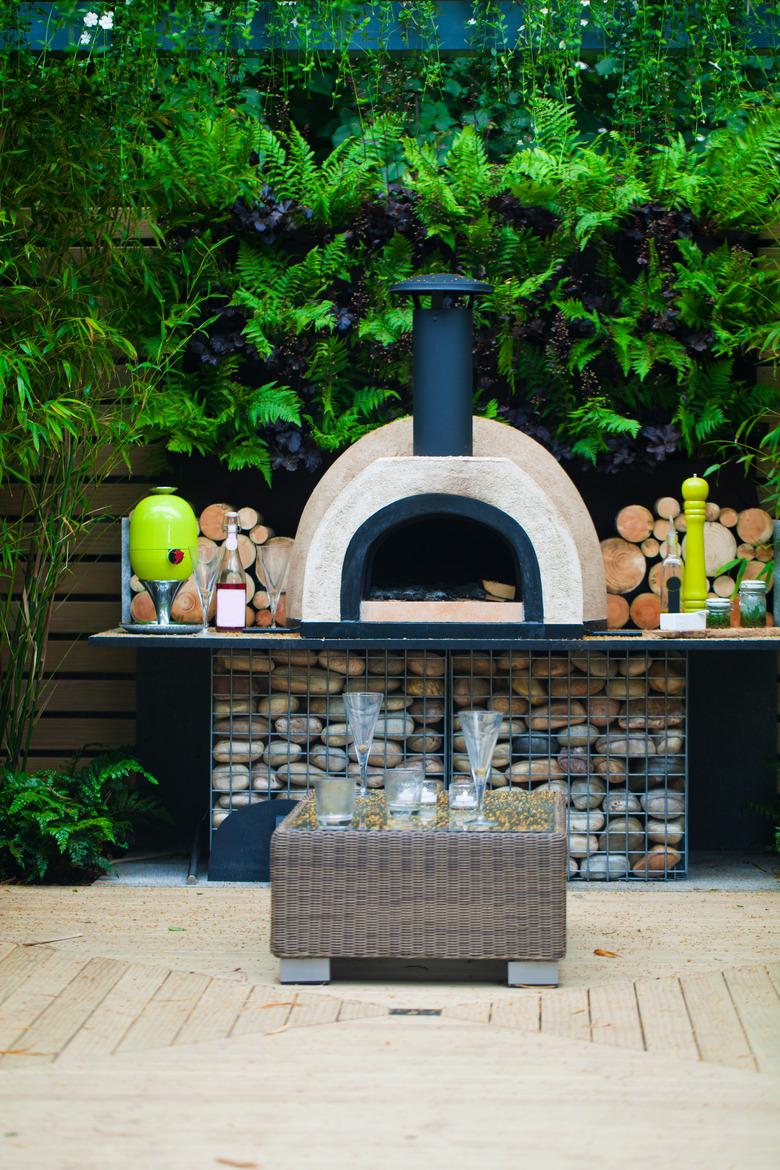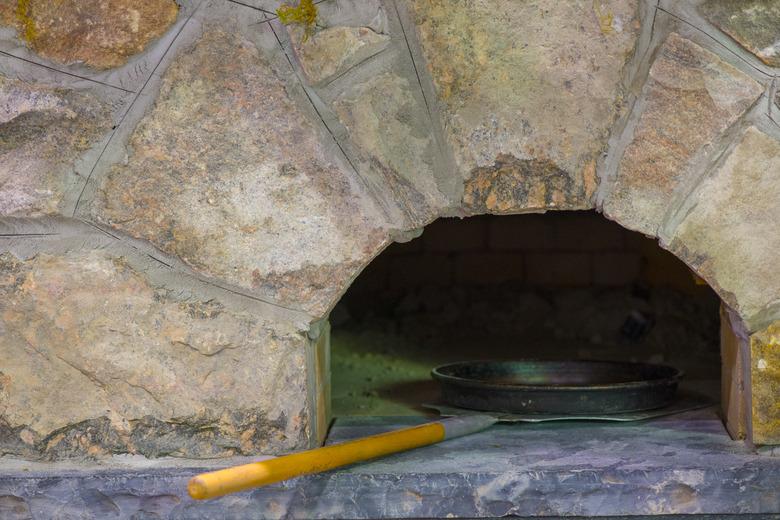The Best Outdoor Pizza Oven For Your Backyard
We may receive a commission on purchases made from links.
Are you searching for an outdoor pizza oven for your backyard? Adding one is truly the perfect way to bring your outdoor kitchen up a notch. If you're craving a high-quality, charred-edge, ooey-gooey pizza, nothing's better than cooking one in a real pizza oven. These cooking machines beat the heck out of regular indoor ranges in terms of heat.
The best outdoor pizza ovens can reach temperatures as high as 900 degrees Fahrenheit, but the high heat isn't only ideal for cooking a homemade pizza — a pizza oven is a versatile baking machine that can handle all sorts of fare. With so many models on the market, finding the best outdoor pizza oven for your needs can be challenging.
Types of Outdoor Pizza Ovens
Types of Outdoor Pizza Ovens
There are four primary types of outdoor pizza ovens, each with different benefits.
1. Built-In Pizza Oven
A built-in pizza oven is a large structure that features a stone or ceramic cooking surface that is typically covered in brick. Built-ins aren't portable like other ovens, and you'll need to be handy to DIY one of these behemoths. These pizza ovens have a traditional look, and they're highly durable. They can be propane powered or wood powered.
2. Freestanding Pizza Oven
Freestanding pizza ovens are full-size, prefabricated ovens that usually sit on a cart or base of some sort. There's no brick-laying involved, which makes these great for people who aren't keen on DIY projects. Think of these as a barbecue for pizza. If you're looking to splurge (like really splurge), Kalamazoo's Freestanding Artisan Fire Pizza Oven is an excellent option with a sleek design that heats up and is ready to bake in just 20 minutes. We love that it's practically a kitchen outside with side tables that allow you to prep pies as you bake others.
While not cheap, Gozney's dual-fuel option is definitely cheaper at $1,999. This pick provides users with two cooking options, as the oven can be fired by both wood and propane.
3. Countertop Pizza Oven
High-heat countertop cooking vessels are designed for — as you may suspect — countertop use. If you're designing an outdoor kitchen from scratch and you envision adding a countertop pizza oven, make sure you create enough surface area to accommodate your new cooking accessory. And if this isn't a viable option, you can always house the appliance on a movable cart. For example, Fontana's Maestro 60 Gas Oven conveniently has the option to bundle with a Portable Mini Desk for an additional $995.
Some countertop pizza ovens — not including propane or wood-fired options — can be used indoors, including Breville's Smart Oven Pizzaiolo Pizza Oven. This heats up to 750 degrees, can cook pizzas in as little as two minutes, and features seven presets that allow you to easily make perfect New York-style pizzas or pan pizzas at home.
4. Portable Pizza Oven
Portable outdoor pizza ovens are models that you can tote around your backyard and even bring on camping trips. They're not ideal for making extra-large pies, but they are lightweight and easy to transport, and they don't require a lot of fuel. Ooni's Karu 12 can reach up to 950 degrees, weighs just over 25 pounds, and can cook a pizza in 60 seconds. This is a favorite among shoppers for the lack of setup required — you can basically start baking pizzas right out of the box. It's no surprise this is the buzziest portable oven of the moment.
Different Fuel Types
Different Fuel Types
Wood Logs and Wood Pellets
If you're looking to go the ultra-traditional route, a wood-burning oven is the way to go. Wood ovens are a bit trickier to operate — you'll need to get comfortable with starting fires anytime you want a fresh slice of pizza — but they deliver crunchy, satisfying results. There are two main wood-fired pizza oven designs: models with a fire located beside the pizza and those with a fire pit at the bottom underneath the pizza. Having the fire closer to the pizza produces an authentic crispy crust, but maintaining the flames is a lot of work, especially since they're out of reach. Having the fire beneath the cooking pizza makes for easier access but an extended preheating period.
Wood pellets are a popular alternative to traditional wood logs because they ignite quickly and don't produce a lot of ash. There are a few small, portable pizza ovens on the market that work well with wood pellets. Both wood and wood pellets impart a distinct flavor that you just can't get with other fuel types. Remember that if you're opting for a wood-burning appliance, you'll have to order, buy, and store wood somewhere on your property. You'll also need to protect your woodpile from the elements. Some municipalities have restrictions on wood-burning appliances, so check your town's bylaws before installing or building one in your backyard.
Gas
Are you not excited about the idea of building and stoking a fire? A gas pizza oven is an ultra-convenient alternative. Setup is easy unless you opt to run a permanent natural gas line, for which you'll need the help of a professional — and it will cost extra too.
Gas ovens are easier to operate than wood-burning ones. Lighting the fire takes just a few seconds. They're also easier to clean since there's no ash residue like there is with a wood pizza oven, and you won't have to deal with buying and storing wood logs on your property. Most gas-powered pizza ovens work with a standard 20-pound propane tank. These are usually housed and concealed at the base of the unit. You can also choose to run a gas pizza oven using a natural gas line, but this requires professional installation.
Electric
Electric plug-in units aren't ideal for outdoor spaces because you can't leave them outside 24/7, but they're very versatile, and you can use them inside too. That said, like your regular oven, electric pizza ovens usually can't reach temperatures higher than 500 degrees. There are a few specialty models on the market that can go higher, but they're ultra pricey.
Charcoal
Charcoal is not commonly used to heat pizza ovens, but you'll find some models that utilize it on occasion. Pizzas cook slower in charcoal ovens, but these ovens do still manage to reach very high temperatures.
Pizza Oven Materials
Pizza Oven Materials
Brick is the material of choice for folks who want a traditional pizza oven look. It's a popular option for outdoor ovens because of its durability — people build houses out of brick, after all. Brick ovens can get as hot as 1,000 degrees, which means they cook pizzas extremely quickly. They're typically powered by wood or gas.
Use clay bricks for a pizza oven since concrete ones aren't made to withstand high heat. Brick is long-lasting, heats quickly, and retains heat exceptionally well. It's cumbersome, though, so it's not the material of choice for a pizza oven you plan on moving around. When building a brick pizza oven, expect it to become a permanent fixture. Pizza ovens can also be made of freeform clay, which has the same properties of brick-shaped clay but with a different aesthetic.
Stainless steel is a durable option with a sleek, modern appearance. Steel doesn't conserve heat as well as other materials, but it's long-lasting and still manages to produce tasty pizzas. It's also lightweight, so it's a popular material choice for portable models.
Pizza Oven Features
Pizza Oven Features
Most outdoor pizza ovens are pretty basic when it comes to features, but some prefabricated options come with multiple accessories, like heat gloves and pizza peels, to help you get started on your pizza-making journey. Some units also come with racks that allow you to cook multiple pizzas. Some outdoor pizza ovens also enable users to switch out attachments to change the fuel type. You'll find the largest feature set in electric pizza ovens. Certain models, for instance, have special temperature sensors to optimize cooking.
Some pizza ovens have an open doorway, which allows for easy access. You can also keep tabs on your food. Others, most notably electric models, have a closed door to help keep heat inside. For an open-door unit, door height is an essential consideration. If there is too big of a gap, the pizza oven will lose a lot of heat. If it's too small, it will be tough to gain access.
Pizza Oven Insulation
Pizza Oven Insulation
Outdoor pizza ovens all have the same dome shape, which helps maintain even heating and high temperatures. A pizza oven should also be well insulated to help prevent heat loss, maximize cooking efficiency, and prevent the outside of the appliance from becoming dangerously hot. Well-insulated models usually feature a ceramic layer that improves heat retention. Be careful around stainless steel models. These get hot on the outside just like your barbecue.
Choosing an Outdoor Pizza Oven
Choosing an Outdoor Pizza Oven
The most important factors to keep in mind when choosing an outdoor pizza oven are how much space you have, how you plan to use the appliance, and whether there are any installation concerns.
Do you have a roomy outdoor kitchen, or are you short on space? A big brick pizza oven may not be the right choice if you're working with a limited amount of room. Large brick ovens can take up more room than a standard indoor range, and expect a freestanding model to be comparable in size to a fancy barbecue. A portable or electric model might be the best outdoor pizza oven if you have a small balcony — just don't forget to store the oven indoors when you're finished. These are usually the size of a large toaster oven or standard microwave.
Bigger isn't necessarily better, though. You don't need a huge pizza oven to be able to churn out pizza pies. Because they generate a lot of heat, you can easily cook one pizza after another. There's not really a need to stuff multiple pies inside at once. An oven with a 32-inch cooking area is enough to fit two pizzas, and there's no need to get a surface bigger than that, especially if you're only cooking pizza. However, if you plan on cooking or grilling other types of food in your high-heat pizza oven, like a whole turkey, then interior size might be something to which you pay closer attention.
For what do you want to use your pizza oven? Do you eat a lot of pizza? Do you want to cook other foods with it? A permanent installation might be the right choice if you're looking for a versatile cooking machine. Permanent built-ins are typically bigger, so you can cook more foods on them. If you intend to use it only occasionally, a portable model might be right for you.
Prefab pizza ovens are great for people who aren't interested in a DIY project. If you're considering building your own pizza oven, do you need to hire someone for the job, or can you manage the work by yourself? Is there anything that a professional absolutely needs to do, like installing a gas line? Unless you're buying an easy-to-install prefab unit, consider the installation and building costs associated with a more labor-intensive pizza oven project.
A portable model is ideal for those who go camping a lot. You can bring it with you when you're on the go. That said, because most portable models are designed to be lightweight, you'll be sacrificing some of the insulative properties of a heavier, bulkier pizza oven.
The look of your outdoor pizza oven won't impact its cooking performance, but it's an important consideration regardless. A sleek stainless steel model is a good fit for a modern outdoor kitchen teeming with clean lines, whereas a traditional brick oven is a perfect fit for a rustic outdoor cooking area.
